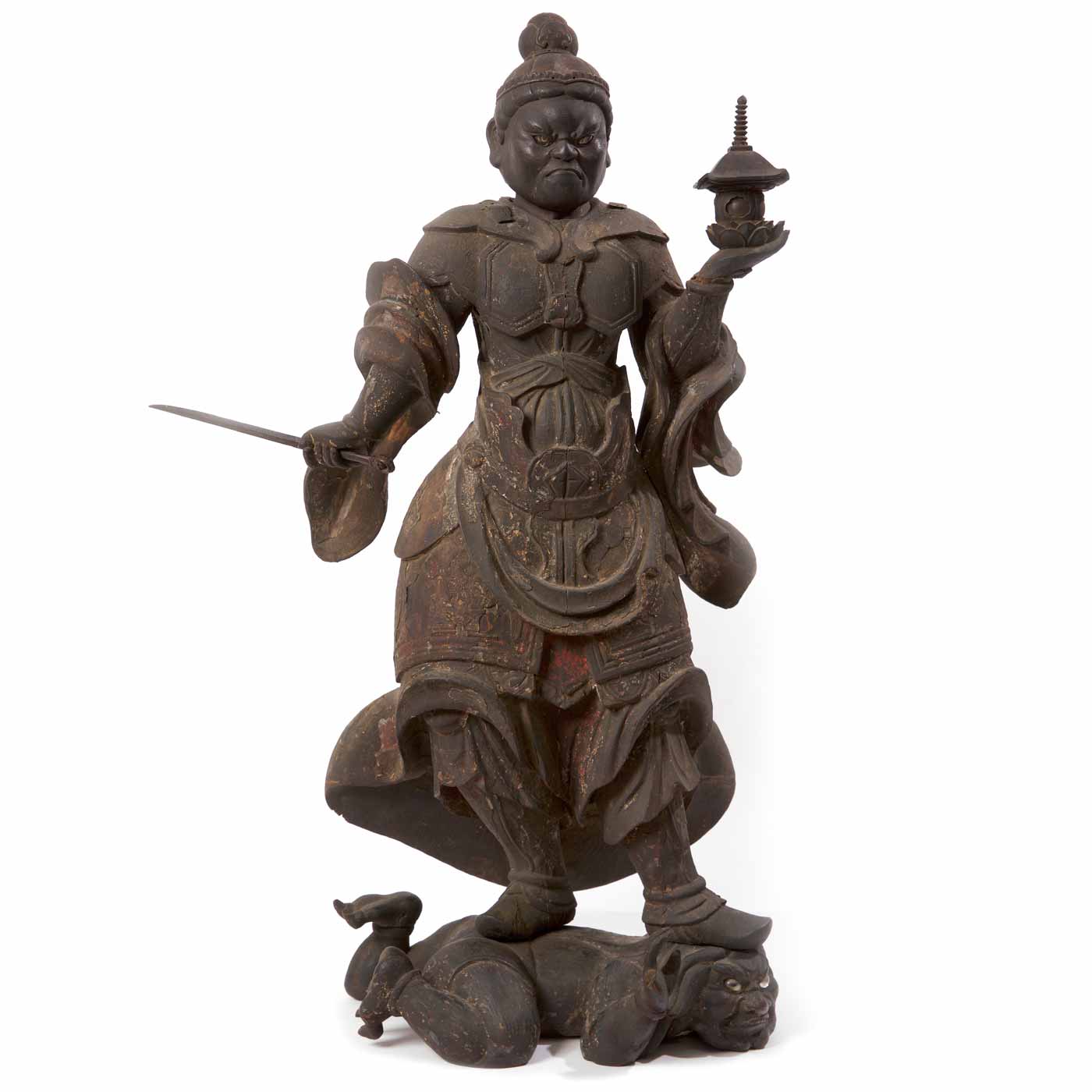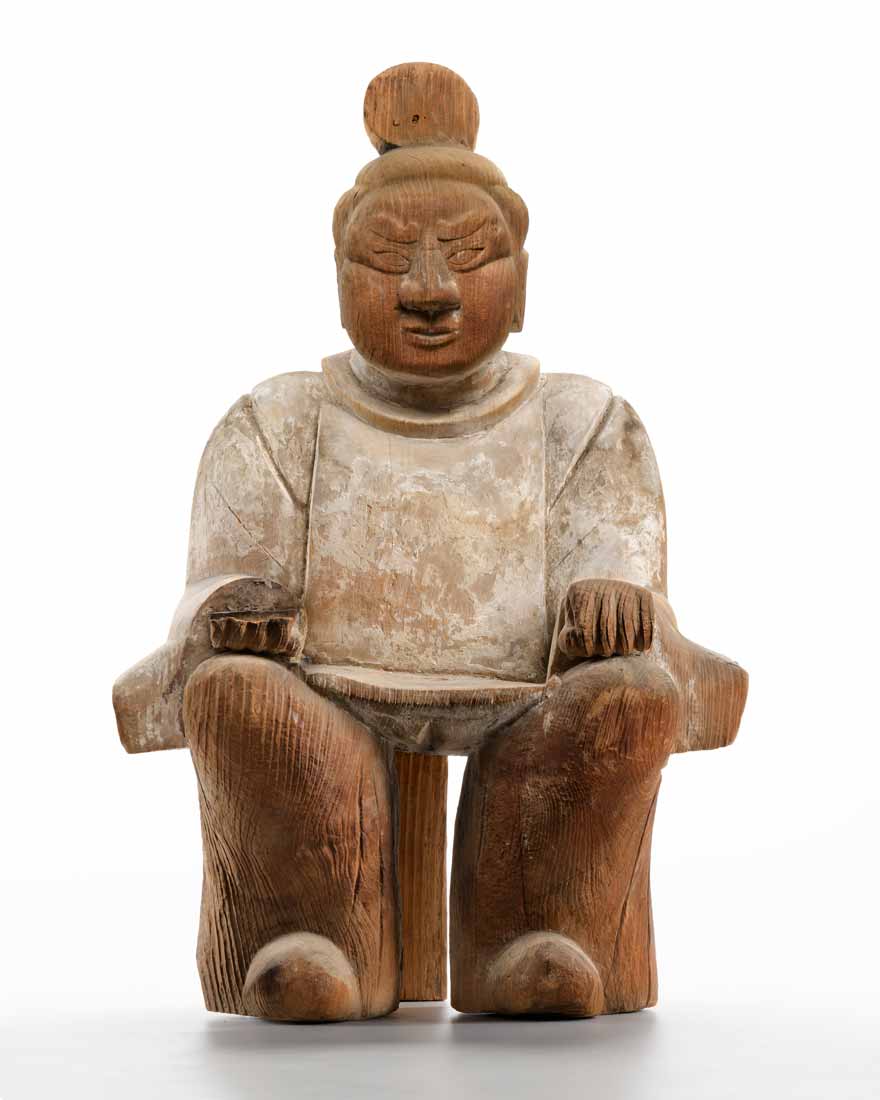Bishamonten
Statuary
- Contact Us
-
Material
Carved wood with traces of polychromy
-
Size
35 x 32 x 87 (h) cm
-
Period
Kamakura period (1185–1333)
-
Scientific Dating
C14 dating: between 1264 and 1296
Description
Statue of Bishamonten
Japan, 13th century
A protective deity of the Buddhist pantheon and guardian of the North, Bishamonten destroys demonic forces and safeguards spiritual treasures. This work is characteristic of the Kamakura period.
Bishamonten (毘沙門天), also known as Tamonten, is a Japanese Buddhist guardian deity derived from Vaiśravaṇa, one of the Four Heavenly Kings.
He is simultaneously the god of war, protector of the Dharma (Buddhist teachings), and guardian of the North.
Bishamonten is depicted wearing the armor of a Chinese general, holding a spear and a small pagoda, which symbolizes the treasure he protects.
Pose: Standing on a demon or yaksha, a malevolent spirit symbolizing the triumph of the Dharma over chaotic forces.
Right hand: Holds a halberd or short spear, emblem of martial power.
Left hand: Presents a miniature pagoda (hōtō), representing the spiritual treasure under his protection.
Facial expression: Intense and wrathful, with furrowed brows, typical of Buddhist protective deities.
The sculpture features finely detailed Chinese-style armor, with a central knot and draperies characteristic of the Kamakura period.
Figures of this type served to protect devotees, ward off demons, and affirm the benevolent presence of Buddhist law.
During the Kamakura period (1185–1333) and the early Muromachi period (1336–1573), Japanese Buddhist art experienced a revival, marked by strong realism and expressiveness.
Intended for a Buddhist temple, such statues were often placed in a guard hall or grouped with the other Heavenly Kings.

